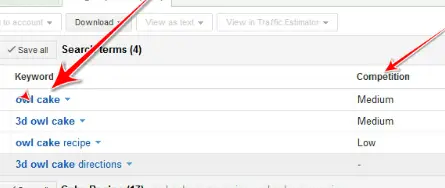
Simply put, keyword competition is a metric that AdWords uses to show potential advertisers how much demand there is for a particular keyword.
This metric is often used by advertisers when performing keyword research.
So what's a high competition keyword?
A "high" competition keyword would suggest many advertisers are interested in showing ads for this keyword, and therefore the cost-per-click (CPC) will be driven up.
This is because advertisers "bid" on keywords by setting a "maximum CPC" amount that they are willing to pay for each click, and AdWords displays the ads of those advertisers that win the "auction" by bidding the highest.
What is a low competition keyword?
Low competition keywords are exactly the opposite - they are keywords that not many advertisers are interested in showing, so the cost of displaying ads for these terms should be lower.
However, this is not always the case...
Take for example a keyword like "Holbrook Lawyers". This is a rather specific term, that only a handful of law firms in Holbrook, MT would be interested in bidding for.
However, let's say a certain law firm in Holbrook was receiving 70% of their enquiries through their PPC campaign. That's big business for them - those clients could be worth millions of dollars!
Because their conversion rate on that keyword is so high, paying a high CPC is worth it for them.
Therefore, if someone came along and tried to outbid Holbrook Lawyers for that keyword, they'd find it difficult to knock the law firm off the top ad spot on search results, because their ad budget would likely reflect their return on investment.
The first ad positions on the top of the page are known as "mainline" ads, although SERPs (search engine result pages) often have ad placements on the sidebar and at the bottom of the page.
The number of ad positions you can compete for will vary from market to market, but being in the top 3 will usually guarantee a prime position.